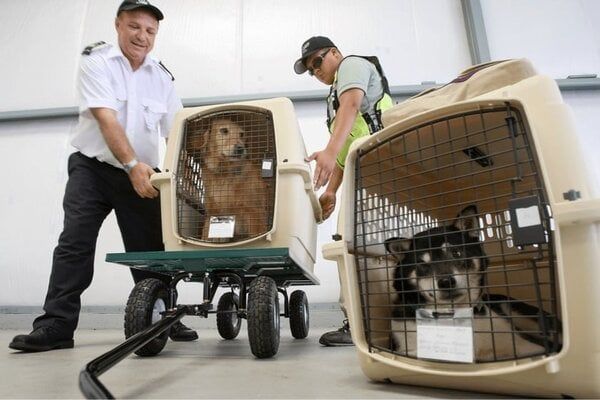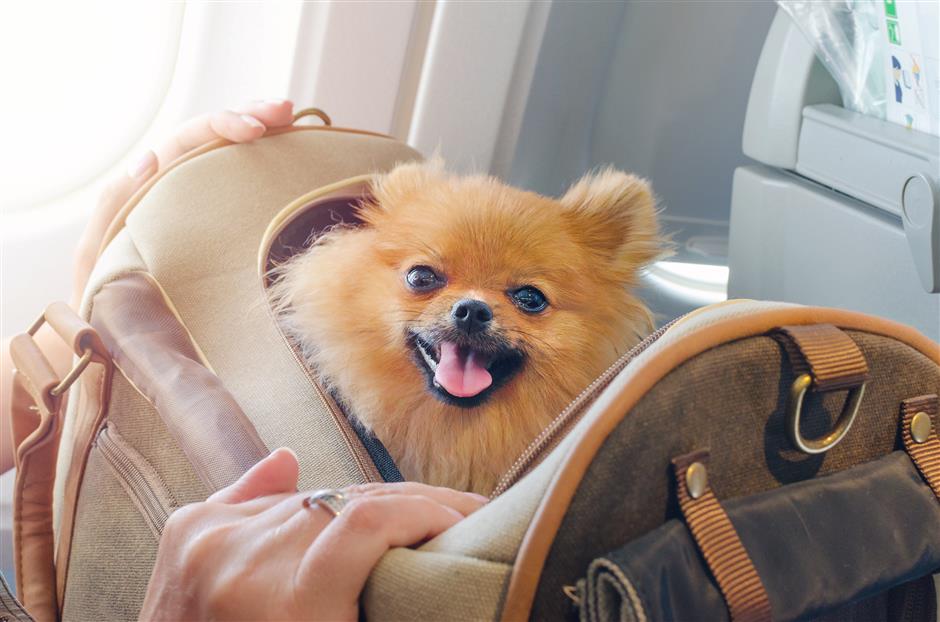COSTS, TIME, AND RISKS OF EACH TRANSPORT METHOD: PET TRAVEL BY COMMERCIAL FLIGHT VS. CARGO FLIGHT
Understanding the Two Main Pet Transport Options
When relocating or bringing pets abroad, owners usually face two main transportation options: flying with a commercial airline (accompanied flight) or shipping pets as cargo. Both methods are legal, safe, and widely used—but they differ in cost, travel time, and potential risks.
Choosing the right option depends on your pet’s size, health, destination, and your own travel plans. Let’s explore the key factors that set these two methods apart, helping you make the most informed decision for your furry friend.
Pet Travel by Commercial Flight (In-Cabin or Checked Baggage)
For small pets that meet airline size and weight restrictions, flying together with their owner is often the most convenient and comforting choice. Pets may either stay in-cabin (under the seat) or travel in the aircraft’s baggage hold, depending on airline policy.
Estimated Cost:
-
Generally ranges from USD 200 – 800 per flight, depending on route, airline, and pet size.
-
Additional charges may apply for special pet carriers, documentation, or connecting flights.
Travel Time:
-
Matches the owner’s flight schedule. This option often saves time, especially for direct international routes.
-
However, during peak travel seasons, seat availability for pets may be limited.
Risks and Considerations:
-
Cabin conditions are controlled, so temperature and pressure remain stable.
-
However, pets might still feel anxious due to the confined space, noise, or unfamiliar environment.
-
Each airline has strict rules on pet carrier dimensions and total pet weight—larger pets may not qualify for in-cabin travel.
Ideal for:
-
Small pets under 7–8 kg (including carrier).
-
Owners who want to personally accompany their pets.
-
Short to medium-distance international flights.

Pet Travel by Cargo Flight
When pets exceed airline weight limits or when owners cannot travel on the same flight, cargo transport becomes the preferred option. Pets are shipped through the airline’s cargo department in temperature-controlled and pressurized holds—the same section used for live animal shipments globally.
Estimated Cost:
-
Typically higher than commercial flights, averaging USD 800 – 2,000 or more, depending on destination, size, and airline.
-
Costs include handling, documentation, customs clearance, and ground transport at both departure and arrival airports.
Travel Time:
-
May take longer due to coordination between cargo handlers, customs checks, and flight scheduling.
-
Some routes require connecting flights, which can add 1–2 days of waiting time.
Risks and Considerations:
-
Cargo transport is regulated under IATA Live Animal Regulations, ensuring safety and humane conditions.
-
However, pets experience longer waiting periods before and after the flight, and stress levels may be higher if not accustomed to confinement.
-
There is also a small risk of delays due to weather, paperwork, or flight capacity.
Ideal for:
-
Medium to large dogs and cats.
-
International relocations or long-distance flights.
-
Owners who cannot accompany their pets.
Tips to Minimize Risks During Pet Air Travel
-
Book early: Pet slots are limited, especially for international flights.
-
Visit your vet: Obtain a recent health certificate and make sure your pet is fit for flying.
-
Choose the right carrier: It must meet IATA standards—well-ventilated, secure, and large enough for your pet to stand, turn, and lie comfortably.
-
Avoid sedatives: These can affect breathing and heart rate during flight.
-
Attach identification: Include your name, contact details, and destination address on the carrier.
Proper preparation not only reduces anxiety for your pet but also ensures a smoother process through customs and quarantine upon arrival.
Choosing the Best Option for Your Pet
If your pet is small and calm, flying together on a commercial flight can provide reassurance and comfort. But for larger pets or long-haul journeys, cargo transport remains the most practical and regulated solution.
Ultimately, both methods aim to ensure your pet’s safety and comfort throughout the journey. The key lies in careful planning, compliance with airline policies, and coordination with a reliable pet travel service provider.
ASIAPATA – Your Trusted Pet Travel Partner
At ASIAPATA, we specialize in international pet transport services, including both commercial and cargo flight arrangements. Our team provides end-to-end support — from documentation, veterinary clearance, and flight booking to customs handling at the destination.
With years of experience and partnerships with leading airlines, ASIAPATA ensures your pets travel safely, comfortably, and legally—no matter which method you choose.
Contact us today for personalized consultation and transparent cost estimates for your upcoming trip.
Read more:














